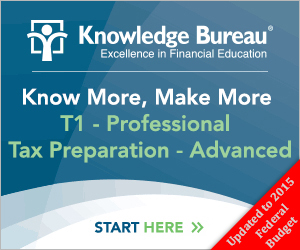Last updated: June 23 2015

DAW SPECIAL REPORT - Inside the CRA: Adding Value by Managing the Relationship with CRA
James Bell, Director of Tax Solutions Canada (a member of the Farber Financial Group), is the perfect person to reveal tips, traps, and pitfalls of working with the Canada Revenue Agency.
Having worked at CRA for over 20 years in several different roles (including audit, collections, and others), James provided a real insider’s perspective on the CRA’s processes and policies.
Following are some highlights from his presentation on how you can manage your relationship with the CRA effectively to add real value for your clients:
- Be aware of the Taxpayer Bill of Rights. Do not hesitate to file a service complaint whenever CRA staff is in violation of this code of conduct and you or your clients are experiencing any service issues. The CRA has established an independent complaint resolution process and it now works quite well.
- However, if a service complaint does not resolve your issue, go to the Taxpayers’ Ombudsman, one of the highest levels you can go to, and it will usually get their attention.
- Communicate with collections on behalf of your clients because the balance of power can switch very quickly from taxpayer to collections in these situations. Dealing with collections can be very intimidating for an individual and you don’t want your client saying or doing the wrong thing because they lack knowledge (for example, handing over all their accounts receivable to the collector). Retain the leverage for your client in these negotiations by handling them yourself.
- Arbitrary assessments can be quite high and clients are often tempted to pay them at face value; however, you can minimize their liability by filing a Notice of Objection. It can take over a year for CRA to get to it, during which time you have put that money out of reach of the collector, and you can be doing a lot to help your clients get up to date on their CRA obligations. But beware: the Notice of Objection must usually be filed within 90 days of the CRA sending the Notice of Assessment or Notice of Determination; an extension is available in some cases. These requests for extension are seldom turned down and can put in you in a position of power in the negotiation.
- A Notice of Objection is usually not simply delaying the inevitable. The CRA person handling the appeal won’t necessarily agree with the auditor’s assessment. In fact, staff in appeals are often much more reasonable than auditors, who are incentivized to put through as many high-value assessments as possible. With the CRA as strapped for resources as any other organization, filing a Notice of Objection can be more worthwhile than ever.
- Appeals officers have a mandate to settle files, so don’t feel that you have to jump at their first offer. You can often negotiate an even better settlement for your client. The CRA may be more flexible on income tax liabilities, agreeing to take smaller payment amounts than in the assessment; however, they are much stricter on the GST/HST side and can and will come after your client right away.
- Caution clients about flipping ownership of assets to someone else’s name (often a spouse) to protect that asset from the CRA. Under Section 160, the CRA can still come after that other person if they are considered a non-arm’s-length entity.
- The Voluntary Disclosures Program may be one of the best programs offered by the CRA. Advisors can often float a no-name disclosure to see if the CRA will accept it before actually filing. For cases with more than 10 years of taxes outstanding, you may be able to limit disclosure to the last 10 years.
- The move to paperless compliance for small business owners can add significantly to the challenges of an audit for these clients. Advisors can add value for these clients by helping them to streamline the process and getting them onto the right software.

